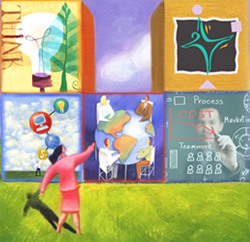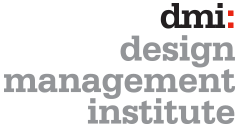

Peaceful Power and the Return of Light
B. Kim Barnes, Barnes & Conti CEO
“We have
it in our power to begin the world over again.”
—Thomas Paine
In recent weeks and months, we have been reminded over and over of the dark side of power—power over others. At Barnes & Conti, we think of power as a set of resources that supports your ability to influence others. Knowledge, relationship, control of resources, position, confidence, moral authority—all are legitimate sources of power—but they are best used as power to—not power over.
Sometimes, we struggle with this. The direct use of power can be effective, from an ethical perspective, primarily in urgent, critical or emergency situations. When you have the knowledge and confidence to make a risky decision, when you have the trusting relationship that breaks a stalemate, when you have the moral authority to act in high-stakes situations, you are using direct power in a responsible way.
Since we are in the season of the return of light and hope, I wish you not only happiness and joy, but also gifts of peaceful power—the power of kindness, collaboration, generosity, courage, and creativity. Using these power resources along with the others, we can hope to make our world a better place.
2017 Training Reflections and Observations
Nelson Soken, Ph.D., Chief Innovation Strategist
As 2017 draws to a close, I would like to share some thoughts on what I have observed conducting Strategic Thinking, Managing Innovation, and Design Thinking sessions in the US, Latin America, Europe, and Asia. Some common contextual themes across client organizations have emerged. Participants seem to be more and more distracted with their day-to-day activities; they appear overwhelmed by the amount of information and communication coming their way and feel constrained by resources; they are spread thin. To keep up, they are task-driven and often times, maintaining a broader line of sight is difficult. They report a lack of clear alignment, focused attention and sometimes support for development from their management, as they too are overwhelmed in executing their responsibilities.
Here are some of my observations of what has proven helpful in no particular order:
- Focus on the Basics: Basics such as norm-setting is key. For example, many participants came to the realization that they could improve on idea generation and utilize simple techniques to broaden engagement and stop a few of the more extroverted, vocal people from monopolizing the time. They also realized that group norms optimize team and organizational performance only when norms are enforced.
- Everyone is Busy and Distracted BUT They Can Enhance Performance by Deliberately Planning Time for Reflection: One of the introductory exercises we conduct in Strategic Thinking is for participants to consider: “Where and when do you do your best thinking?” Participants share examples such as: “when I am driving,” “early or late in the evening,” “walking,” “while taking a shower,” “exercising,” “talking to a group of people,” and “right after I fall asleep.” We recommend that they deliberately plan time (even a few minutes) to reflect and participate in these activities to encourage strategic thinking and spur creativity and, if for no other reason, to take a break from constant activity and task completion. Participants often report that it was helpful to have this “permission.”
- Recognizing that the “Tool/Technique/Method/Process” Will Not Give You an Answer, It Takes a Shift in Mindset: We emphasize to participants that they need to focus on managing and changing their mindset when they approach challenges. A topic that particularly resonates with participants is cognitive biases or errors in memory, reasoning, and decision-making that impacts all of us, such as loss aversion—which is the bias where people tend to prefer avoiding loss to acquiring equivalent gain (feel better not to lose $5 than to gain $5). Better outcomes and team alignment will only happen when we understand the dynamics of how people think, can shift our own and other people’s mindsets, and use the right tools/techniques in the right way so that the results are reliable and valid (e.g., ranking options only after everyone is clear on options and the meaning of criteria).
- Creating Learning Journeys: Going beyond Knowing to Doing: There is a trend for going beyond “training events” and focusing instead on real applications. We encourage clients to engage participants and leaders to bring “real-world, time-sensitive” priorities into class so that they can learn concepts/tools/techniques. More importantly, they come up with a game plan to use their learnings on their real-world issues. In some cases, we schedule post-program integration webinars, where participants come back together to discuss how they have applied their learnings and changes they have implemented in their day-to-day activities. We strive to help participants not only to learn, but to act on what they have learned and to apply it as quickly as possible to their real-world challenges.
- Looking Across Individual and Organizational Silos: We challenge participants to “get out of their own heads” and look at challenges broadly and systematically to ensure that they are not viewing their challenge too narrowly and making decisions without considering all stakeholders and circumstances. We ask them to recognize and avoid cognitive biases—such as the confirmation bias—when they “Map the Territory,” “Identify and Test Assumptions,” view situations with “Empathy,” and have a “Seeker” mentality. By recognizing mindsets and applying tools/techniques, participants can go beyond themselves, be comfortable with uncertainty and adapt as they learn, deliberately look at the world broadly, filter the relevant from the irrelevant, and drive to action.
- Investment and Encouragement in Continuous Learning: Clients that have an established commitment to learning and development for their employees spread a common mindset that ultimately impacts the culture through common language. Often, employees come through a course based on a recommendation from a previous participant. One can identify references that are clearly based on activities they have been through with a former participant in the workshop. In addition, shared resources (e.g., book summaries, tools/techniques) provided to participants are distributed in the organization and that encourages active and continuous learning.
2017 has been personally enriching and exciting because of the talented clients I have had the opportunity to work with! Here’s to an even more exciting 2018 as we all continue to move forward on our individual and organizational learning journeys.
Announcing Public Programs for 2018
In 2018, we’re offering five of our most popular programs on an open to the public basis. All programs will be facilitated in our Berkeley, California office. The cost for each is $795 per participant. Internal consultants, please note that you can take both Exercising Influence and Consulting on the Inside on successive days in March and July to learn to be a more influential internal consultant.
 Exercising Influence
Exercising Influence
March 8, 2018
July 12, 2018
Consulting on the Inside
March 9, 2018
July 13, 2018
Strategic Thinking
May 17, 2018
Managing Innovation
June 7, 2018
Intelligent Risk-Taking
October 4, 2018
Enroll on our website
Barnes & Conti’s Collaboration with Design Management Institute (DMI)
 Earlier
this month, Barnes & Conti
began what we think will be an exciting collaboration with DMI. Our
first joint venture was the DMI Symposium in Manhattan Beach, California.
The theme of the symposium was Design: Exercising
Influence. Other co-sponsors included BCG Digital
Ventures and Pip Tompkin Design.
Earlier
this month, Barnes & Conti
began what we think will be an exciting collaboration with DMI. Our
first joint venture was the DMI Symposium in Manhattan Beach, California.
The theme of the symposium was Design: Exercising
Influence. Other co-sponsors included BCG Digital
Ventures and Pip Tompkin Design.
Highlights from the symposium included having top innovators and leaders in design discuss design thinking, strategic design, sustainable design, strategic leadership in design and innovation, managing roadblocks to innovation, and more. Participants from a variety of companies and consultancies were able to network with one another, garner insights, and share challenges and best practices.
Our own Kim Barnes moderated a panel discussion on leadership and influence that covered influence challenges, failures, successes along with influence tips and helpful hints. Nelson Soken, Barnes & Conti’s Chief Innovation Strategist, delivered a full-day Strategic Thinking workshop with an emphasis on how strategic thinking fits with design thinking.
Barnes & Conti next joint venture with DMI will be in May 2018 at ATD 2018 in San Diego. Carole Bilson (President, DMI) and Nelson Soken (Chief Innovation Strategist) will co-present Design Thinking Case Study: How the Design Management Institute and Barnes and Conti are educating corporate leaders in innovation and strategic problem-solving. Come join us!
Facilitating Forward: Guiding Others Towards Results—New Handbook Coming Soon
![]() As a number of people have shown interest, Kim Barnes plans to
create a stand-alone handbook on facilitation based on Barnes & Conti’s Facilitating
Forward workshop content. This content is based on many years
of working with groups, large and small, in many industries, for
many purposes. The book will contain key concepts on group process,
graphic models, tools, techniques, exercises, templates, and suggestions for “troubleshooting.” Please
feel free to share any ideas that would be helpful for us to include.
As a number of people have shown interest, Kim Barnes plans to
create a stand-alone handbook on facilitation based on Barnes & Conti’s Facilitating
Forward workshop content. This content is based on many years
of working with groups, large and small, in many industries, for
many purposes. The book will contain key concepts on group process,
graphic models, tools, techniques, exercises, templates, and suggestions for “troubleshooting.” Please
feel free to share any ideas that would be helpful for us to include.
New Applications of Popular Programs
We have recently customized two programs for clients to work with specific applications which we think may have broader appeal: Leading Remote Teams through Influence and The Influential Innovator. Please contact Lauren Powers if you want to discuss how these programs might be of help to your organization.
Leading Remote Teams through Influence
More and more work is done in cross-functional, remote teams. This program introduces a model of influence behavior that enables participants to achieve results while building relationships in a matrixed and virtual team environment. Participants increase awareness of how they currently use influence behaviors as a team leader/member and learn how to approach working in a matrixed environment with multiple stakeholders. They learn key factors for co-located and/or virtual teams and model skills that result in world-class team performance culminating in an action plan to improve their team’s performance.
The Influential Innovator
A good idea does not necessarily sell itself. To be successful innovators, people need to influence others to work with them to improve or expand their idea, offer input on concept (i.e. prototype), provide resources, gain sponsorship, secure investment, and help navigate the political organization to get the best hearing for their idea. In this program participants learn how to move an idea toward commitment and investment and apply the influence framework to real world influence situations that occur during the innovation journey. Using specific influence tools, they develop an approach (pitch, large group presentation or one-on-one meeting) that takes into account key stakeholder and organizational factors.
Top 10 Personal Realizations for 2017
Lauren Powers, SVP, Business Development
My top ten realizations for this past year are very similar to last year’s. In other words, 2017 brought nothing mind-blowing, just helpful! Here they are
 When the political environment is in a state of flux,
the truly important things really matter: family, friends, good
health, and meaningful work.
When the political environment is in a state of flux,
the truly important things really matter: family, friends, good
health, and meaningful work. - There is a tipping point…the issue of sexual harassment has reached it!
- Honest dialogue and receptive listening help…tremendously.
- Nothing is guaranteed; life can change in a flash. Plan B’s are important and can be exciting
- Old friends return and networks grow.
- Being organized is a life skill I wish came more naturally.
- There is no shortage of innovations in food, thank goodness!
- Becoming a friendlier and more open person to perfect strangers invites some interesting discussions and makes me feel better.
- Keep perspective…the pendulum swings in both directions and eventually finds its balance.
- Puppies are the best—“Bula” keeps us smiling and has been worthy of her Fijian name! (see blog posting on the Fijian origin of Bula’s name)
Like this newsletter?
Subscribe now!
For more valuable information and special offers, follow us!
In this Issue:
- “Peaceful Power and the Return of Light,” by B. Kim Barnes
- “2017 Training Reflections and Observations,” by Nelson Soken, Ph.D.
- Public Programs for 2018
- New for 2018
- Handbook for Facilitating Forward by Kim Barnes
- New Applications of Popular Programs, Influence & Innovation
- “Top 10 Personal Realizations for 2017,” by Lauren Powers
- Book Corner 2017 (below)
- Recipe: Fuji Apple Egg Rolls (below). See website for additional holiday recipes.
- Featured Art: “A Light in the Darkness,” by J.M.W. Turner (above)
Firestorm and Hurricane Relief
Please help the relief effort.

Photo © Santa Barbara County Fire Department
Visit our relief info page
Book Corner 2017
In our workshops, we are often asked, “What books should I read if I don’t have a lot of time?”
Nelson Soken, our Chief Innovation Strategist, has two picks for 2017: The Blue Ocean Shift by W. Chan Kim & Renee Mauborgne and Stretch by Scott Sonenshein. Both books provide a good strategic framework to look at how your organization can deliver value while working within constraints and available resources.
The Blue Ocean Shift
The Blue Ocean Shift describes a strategic framework with many real-world case studies whereby organizations can create differentiation at a lower cost through value innovation. The goal is to create blue oceans by accessing untapped markets and creating demand rather than fighting it out with competitors in red oceans where profits and growth are tough to come by due to commoditization and cut-throat competition (add features and reduce price).
Stretch
Stretch, on the other hand, describes two organizational and individual mindsets: The Chaser mindset operates with the assumption that to succeed, you need to obtain more resources (people, power, resources). The Stretcher mindset focuses on succeeding with the resources that are already available. Stretchers ask the question: “What else can I do with what I have and how can I reach my goals with what I have?”
So, if you are interested in developing a plan of attack for creating value with available resources and looking for opportunities to pursue untapped markets, these two books will provide good insights on how to develop a strategy and are well worth your time reading.
Recipe: Fuji Apple Egg Rolls

Eric Beckman, Barnes & Conti President and noted chef, contributed this recipe for our Thanksgiving newsletter recipe extravaganza. The recipe was so good, we held it back for December. We hope you enjoy it!
Ingredients:
- 3 Fuji apples, large, peeled, diced into 1/4 inch
- 1/4 pound butter, unsalted
- 1 cup brown sugar
- 1 tsp cinnamon, ground
- 1 large egg
- 1 package egg roll wrappers
- 1 tbsp cold water
- Shortening for deep frying 3
- 1 tbsp powdered sugar
- 1 additional tsp cinnamon, ground (for garnish)
Method:
- In a large skillet, melt butter on low heat. Do not let butter burn.
- Once butter is melted add brown sugar. Whisk well until sugar has completely melted.
- Toss in apples and let simmer for a few minutes, making sure to stir constantly.
- Remove from heat, add cinnamon and fold in to incorporate.
- Spread mixture onto a sheet tray and let cool down in refrigerator.
- Once mixture is cool, drain mixture in a fine mesh colander so that excess liquid drains well. Mix egg with cold water in a small bowl to make egg wash.
- Assemble egg rolls by using 1 1/2 tablespoons of mixture in each wrapper and roll like you would an egg roll. Seal with egg wash.
- In a deep pot or fryer, heat shortening to 300 degrees. Fry egg rolls until golden brown.
- Combine powdered sugar and additional teaspoon of cinnamon well in a shaker. Dust egg rolls and serve immediately.
Yield: 12-14 egg rolls
You can also pan fry and then freeze to use at a later time. Reheat at 350 degrees on a sheet tray for 5-6 minutes or until crisp and golden brown. Serve with Ginger Mascarpone Cream.
Ginger Mascarpone Cream
Ingredients:
- 1 cup heavy cream
- 1/2 cup sugar, granulated
- 1-inch piece ginger root, peeled
- 3 tbsp Canton (ginger liqueur)
- 1 cup mascarpone cheese
Method:
- In a small saucepan, combine all ingredients except mascarpone cheese
- Allow to steep for about 15 minutes. Remove and cool down immediately.
- Using an electric hand mixer, whisk together cream mixture and mascarpone cheese until light and fluffy.
- Place in serving bowl and serve immediately.
Did you miss our virtual feast last month?

More 2017 Holiday Recipes are available on our website.
You are receiving these emails from Barnes & Conti because you are a client, colleague, and/or friend of Barnes & Conti Associates. or you contacted us through our website, at a trade show, or via social media. Barnes & Conti does not sell, trade, or give away mailing lists or email addresses to anyone. Period.
If you no longer wish to receive these bulletins, use this link to unsubscribe or write us at Barnes & Conti, 940 Dwight Way Suite 15, Berkeley, CA 94710.
*Please don't forward this entire email; the person you forward to might inadvertently unsubscribe you with the above link!